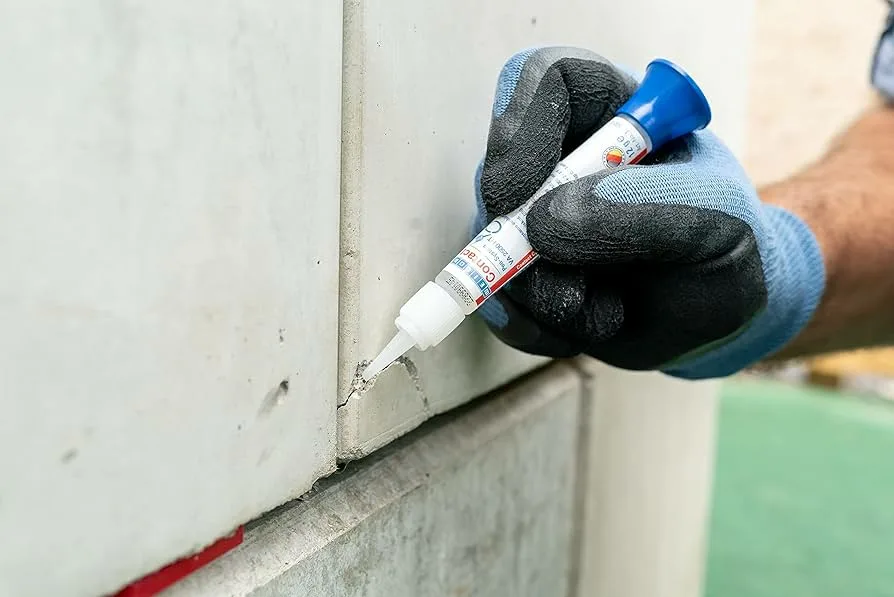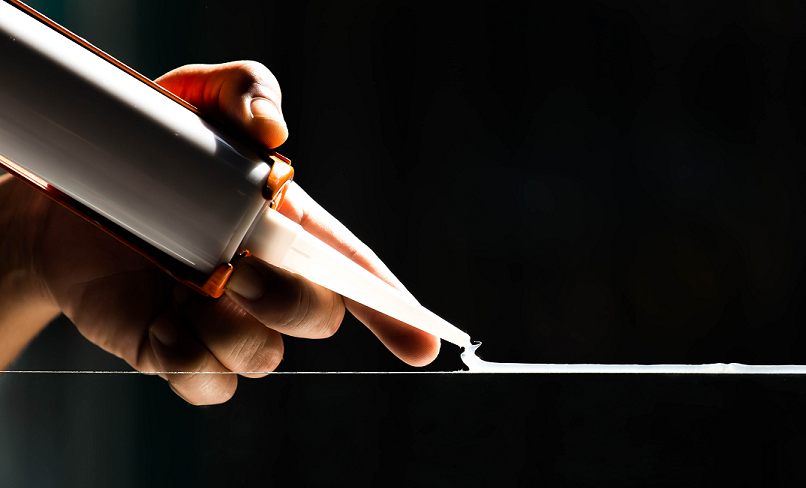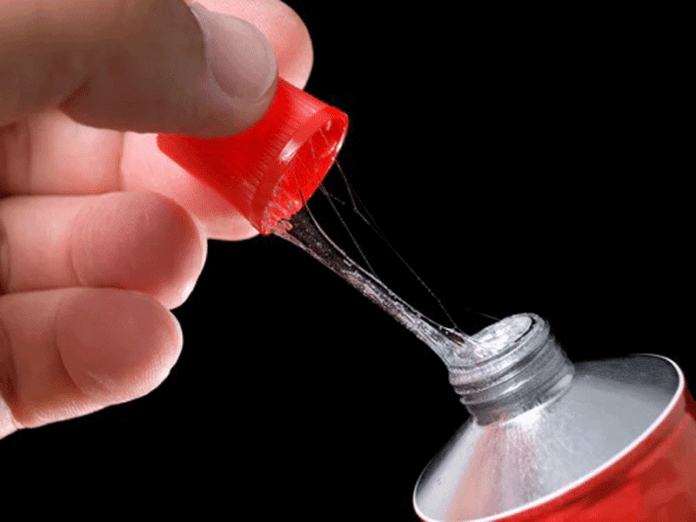Cyanoacrylate adhesives, commonly known as super glues, are widely used in construction due to their fast curing time and strong bonding properties. These adhesives exhibit rapid polymerization upon encountering moisture, resulting in sturdy bonds between an array of materials including metal, plastic, wood, ceramic, and rubber. Their exceptional resistance to temperature fluctuations, moisture, and various chemicals renders them ideal for both indoor and outdoor applications.
Where are cyanoacrylate adhesives used?
- Assembling structural components such as beams, panels, and trusses
- Bonding materials like wood, metal, concrete, and plastic in various construction projects
- Repairing cracks, joints, and seams in building materials quickly and effectively
- Securing decorative elements, trim, and molding in place
- Attaching fixtures, hardware, and accessories to surfaces in buildings
- Laminating surfaces for countertops, flooring, and cabinetry
- Installing insulation materials and weatherproofing seals
- Bonding tiles and veneers to walls, floors, and facades
- Mounting signage, fixtures, and lighting fixtures
- Fabricating prototypes and models for architectural design validation
- Joining prefabricated components in modular construction
- Bonding glass in windows, doors, and curtain walls
- Sealing joints and gaps to prevent air and water infiltration
- Repairing and reinforcing concrete structures, such as bridges and highways
Advantages of cyanoacrylate adhesives
- Rapid bonding for increased efficiency.
- Versatile adhesion to various construction materials.
- Convenient application with no mixing required.
- Durable bonds resistant to environmental factors.
- Precise application for intricate tasks.
- Space Saving alternative to mechanical fasteners.
- Excellent gap filling capability for seamless repairs.
- Minimal surface preparation required for quick application.
- High temperature resistance for enduring performance in challenging environments.
- Transparent formulations for invisible bonds in aesthetic applications.
- Solvent-free compositions for environmentally friendly construction practices.
- Long shelf life for extended storage and usability on job sites.
- High strength to weight ratio for light weight yet robust constructions.
- Impact resistance for enhanced structural integrity.
- Flexibility after curing to accommodate movement and vibrations.
- Compatibility with automated application systems for mass production.
- Low odour formulations for improved user comfort during application.
- Compatibility with paints and coatings for seamless finishing touches.

Types of cyanoacrylate adhesives
Ethyl Cyanoacrylate:
Ethyl cyanoacrylate adhesives are versatile and widely used in construction for their fast curing time and high bond strength. They are ideal for general-purpose bonding of materials such as metals, ceramics, plastics, and rubber, making them essential for assembling household fixtures, repairing small objects, and bonding various construction materials. With their clear appearance, low viscosity, and ability to bond non-porous surfaces effectively, ethyl cyanoacrylate adhesives offer rapid assembly, strong and durable bonds, and versatility in diverse construction applications. Their fast curing time allows for quick project completion, while their high bond strength ensures the structural integrity of assembled components, making them a preferred choice for builders and contractors.
Methyl Cyanoacrylate:
Methyl cyanoacrylate adhesives are valued in construction for their ability to bond porous materials such as wood, paper, fabrics, and leather. They penetrate deeply into porous substrates, forming strong bonds without the need for extensive surface preparation, making them suitable for woodworking, crafts, upholstery, and related applications. With their quick bonding and minimal surface preparation requirements, methyl cyanoacrylate adhesives offer fast assembly and reduced downtime in construction projects. Their slightly higher viscosity compared to ethyl cyanoacrylates enhances their ability to bond porous surfaces effectively, ensuring reliable performance and durability in various construction applications.
Butyl Cyanoacrylate:
Butyl cyanoacrylate adhesives are known for their flexibility and impact resistance, making them essential for bonding materials prone to movement, vibration, or thermal expansion, such as plastics, metals, and rubbers in construction. Their rubbery consistency allows them to withstand dynamic stresses and movements in bonded assemblies, reducing the risk of cracking or brittle failure. Additionally, butyl cyanoacrylate adhesives offer gap-filling properties, filling small gaps and irregularities between bonded surfaces, enhancing the overall strength and stability of the assembly. These adhesives also exhibit good resistance to chemicals and moisture, ensuring durability in harsh environmental conditions commonly encountered in construction projects.
Alkoxyethyl Cyanoacrylate:
Alkoxyethyl cyanoacrylate adhesives are preferred in construction applications requiring superior temperature resistance and long-term durability, such as outdoor structures, automotive components, and marine applications. They offer improved resistance to high temperatures and environmental factors like UV exposure, humidity, and chemical exposure, ensuring reliable performance over time. Alkoxyethyl cyanoacrylate adhesives exhibit lower levels of brittleness compared to standard formulations, contributing to their long-term bond strength and stability in challenging conditions. With their modified chemical structure, these adhesives provide the fast-curing and high-strength properties characteristic of cyanoacrylate adhesives, making them suitable for demanding construction requirements.
Thick Cyanoacrylate Adhesives:
Thick cyanoacrylate adhesives, characterized by their high viscosity, are specifically formulated to fill gaps and bond porous and uneven surfaces effectively. They require less surface moisture for curing compared to standard cyanoacrylates, making them suitable for applications where surface moisture may be limited. These adhesives excel in bonding materials with irregularities or gaps, providing strong and reliable bonds that withstand stress and movement. Their ability to fill gaps enhances the overall strength and stability of bonded assemblies, making them ideal for structural bonding and repair tasks in construction projects.

Different methods used for applying cyanoacrylate adhesives
1. Brush-On Application: Cyanoacrylate adhesives can be applied using a brush, allowing for precise control and uniform coverage of the bonding surfaces. Brush-on application is ideal for bonding small, intricate parts or applying adhesive to specific areas without excess dripping or running.
2. Drip Application: This method involves dispensing the cyanoacrylate adhesive directly from the bottle or tube onto the bonding surfaces using a dropper or applicator tip. Drip application is suitable for general-purpose bonding tasks and allows for easy and convenient application of the adhesive over large or irregular surfaces.
3. Gel Application: Cyanoacrylate adhesives are available in gel formulations with higher viscosity, allowing for easier handling and application on vertical or overhead surfaces. Gel adhesives minimize dripping and running, making them ideal for bonding porous or uneven surfaces and filling gaps effectively.
4. Spray Application: Some cyanoacrylate adhesives come in aerosol spray cans, allowing for quick and uniform application over large areas or intricate shapes. Spray application provides a thin, even coat of adhesive, making it suitable for bonding lightweight materials, securing temporary fixtures, or applying adhesive to hard-to-reach areas.
5. Dual Cartridge Dispensing: In industrial settings or for specialized applications, cyanoacrylate adhesives can be dispensed using dual cartridge dispensing systems. These systems mix the adhesive with a curing agent or activator before application, ensuring proper curing and bond strength. Dual cartridge dispensing is commonly used for structural bonding, sealing, or potting applications requiring precise control over adhesive ratios and cure times.
Step by step method for cyanoacrylate adhesives application
Here’s the step-by-step application method for using cyanoacrylate adhesive in construction.
- Surface Preparation: Clean and dry the surfaces to be bonded, removing any contaminants like dirt, dust, grease, or oil.
- Alignment: Check the fit and alignment of the parts to be bonded before applying the adhesive, making any necessary adjustments.
- Application: Apply a small amount of cyanoacrylate adhesive to one of the surfaces using a preferred method, such as direct application from a bottle or tube.
- Joining Surfaces: Press the two surfaces firmly together to create a bond, ensuring proper alignment.
- Avoid Excess Adhesive: Be careful not to apply too much adhesive, wiping away any excess before it cures.
- Curing Time: Allow the bonded assembly to cure for the recommended time, typically seconds to minutes.
- Final Inspection: Inspect the bond for strength and integrity once the adhesive has fully cured.
- Finish and Cleanup: Finish the assembly as needed and clean up any spills or excess adhesive with acetone or adhesive remover.
Conclusion
Cyanoacrylate adhesives have become indispensable in the construction industry, offering rapid bonding, exceptional strength, and versatility across various materials. Their rapid bond formation has significantly transformed construction methodologies, enhancing operational efficiency and facilitating creative design approaches. As the construction landscape evolves, cyanoacrylate adhesives will continue to play a pivotal role for construction professionals, ensuring the construction of sturdier, more resilient structures for generations to come.
Images- Weicon, godtopssm.life

